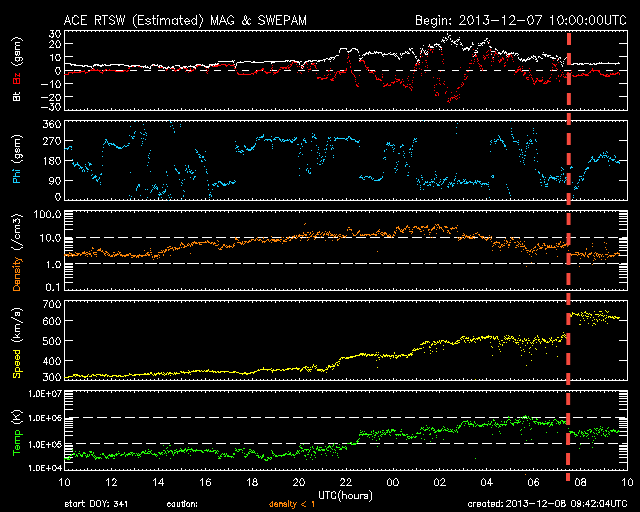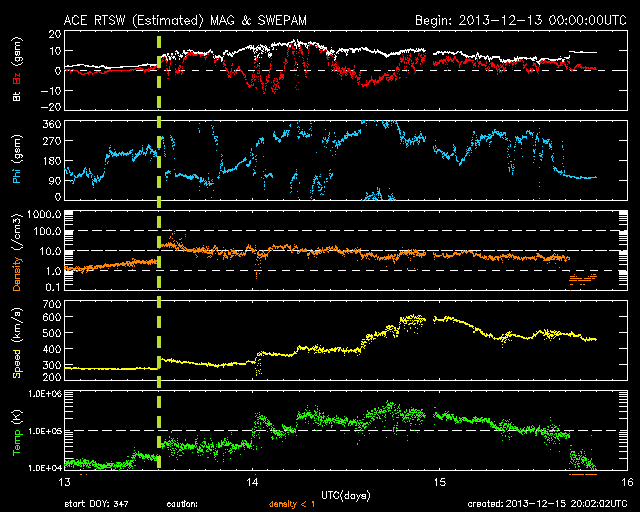On December 8 and 13, something particularly interesting happened in the solar wind: ACE in situ solar wind data showed a shock and both times the shock was driven by a coronal hole. Shocks driven by a coronal mass ejection are common. But this was shocking news.
Fast catches up with slow
The solar wind flowing from a coronal hole is boosted in speed. In the cartoon you see a fast blue solar plasma particle from a coronal hole (black structure) catching up with the slow green solar plasma particles that left the Sun earlier. The Sun rotates and as such the coronal hole turns with the Sun. The green and blue line represent the magnetic tentacles of the Sun that even reach the boundary of the heliosphere. The green line is more curved because it is linked with a slower solar wind, while the blue line is slightly more radial because of a faster solar wind.

Fast and slow interact in the region between the green and blue line resulting in an increased magnetic field strength and density in the region between A and B in the figure by Gonzalez (1999) with structures like Forward Shock, InterFace, Reserved Shock.

Attention - Levelling works ahead
The density profile of the interaction region (co-rotating interaction region, CIR) looks like a hill that moves away from the Sun. In front of the hill, you have a slow wind while a fast wind is trailing. Nature tries to expand the dense structure to get rid of the density hill and put a flat density landscape in place. By moving the front flank to the right and the behind flank to the left, the density curve is stretched and flattened; and both flanks will be steepened to finally result in a crude passage from low/high to high/low density which mathematicians like to call a step function and solar physicians have a mouth full of a shock.

The front flank needs to move of course faster than the slow plasma in front of it. The shock in the front is called a forward shock, the shock trailing the high density region is called a reversed shock. For all shocks, it is the difference in speed between the slow and the fast solar wind that drives the whole system. When a forward shock driven by a CIR passes an instrument that makes in situ measurements, the speed, density and temperature suddenly increase. When a reversed shock passes, the speed increases, but density and temperature decrease.
Once passed the reversed shock, you end up in the fast stream emanating from the coronal hole with a typically low density and high speed such that the plasma flux is the same and in the part where you have a slow but dense plasma.

Shocking
Forward and Reversed Shocks are usually formed well behind Earth which is at 1AU. So, the reversed shock on December 8 and the forward shock on December13 recorded by ACE were exceptional.


 |
 |





